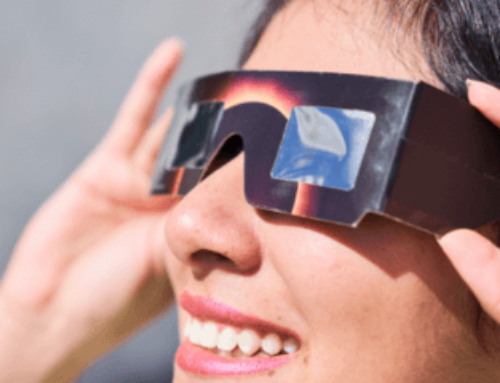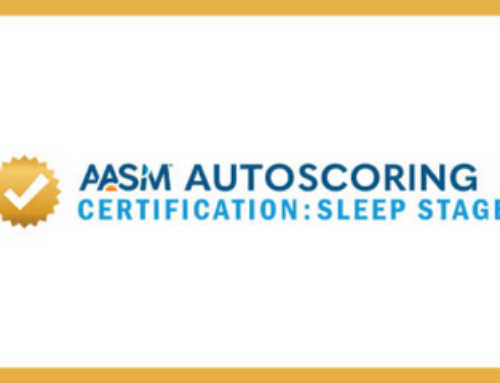The start of the new school year is the perfect time to renew habits that keep students happy and healthy – including sleep. The American Academy of Sleep Medicine is holding the third annual Student Sleep Health Week Sept. 12-18, 2022, to educate students, parents and educators about the importance of sleep for success, well-being and overall health.
“Sufficient, healthy sleep is critical for students to excel in schoolwork, sports and extracurricular activities,” said AASM President Jennifer Martin, a licensed clinical psychologist. “When students get proper sleep, they are more optimistic, feel their best, and are better able to concentrate on their studies, while insufficient sleep can leave students exhausted and unprepared for school, making it harder to learn and pay attention.”
Benefits of Healthy Sleep
Research shows that students who get healthy sleep experience better outcomes, including improved attention, behavior, learning, memory, emotional regulation, and mental and physical health. The benefits of establishing healthy sleep habits now can benefit students long into the future. A recent study published in the Journal of Clinical Sleep Medicine shows that poor sleep habits in adolescence contributed to poor health outcomes in adulthood.
“Prioritizing healthy sleep throughout the year allows students to flourish at school and in life,” said Martin.
How Much Sleep is Needed?
The AASM recommends children 6-12 years of age should sleep nine to 12 hours on a regular basis to promote optimal health, while teenagers 13-18 years of age should obtain eight to 10 hours of sleep per night. The benefits of healthy sleep require not only adequate sleep duration, but also appropriate timing, daily regularity, good sleep quality, and the absence of sleep disorders.
Later School Start Times Recommended for Adolescents
An AASM position statement asserts that the school day should begin at 8:30 a.m. or later for middle school and high school students to allow them to get the healthy sleep they need. Early start times work contrary to adolescent circadian physiology and truncate students’ sleep opportunity, resulting in chronic sleep loss. For more on why teens are biologically wired to be “night owls,” watch the AASM video, “Why Are Teens So Sleepy?”
Later school start times are being implemented in California for the first time this year. State legislators passed a first-of-its-kind law in 2019 requiring that public high schools begin classes no earlier than 8:30 a.m., and that middle schools start no earlier than 8 a.m. The law officially went into effect on July 1.
New School Year, New Habits
“The transition from summer break – a period when children typically have more relaxed schedules and later wake-up times – to the demanding pace of the school year can pose challenges for many students,” said Martin. “Incorporating changes to prioritize setting a bedtime and getting sufficient, healthy sleep can have a tremendous impact on students’ attitudes, grades, and physical and mental health, while setting them up for success throughout the upcoming year.”
Try these tips to make the transition into a new school year easier and establish routines that will help keep students healthy and well-rested for their studies:
- Use the AASM’s bedtime calculator to set the right bedtime for each individual student based on their age and the time they need to wake up.
- Transition to the new bedtime and wake time by gradually shifting bedtime 15 minutes earlier each night and wake time 15 minutes earlier each morning to get on the right schedule.
- Restrict screen time before bed.
- Develop a relaxing nightly routine, which may include reading, journaling or taking a warm bath or shower.
- Create a quiet, cool sleep environment.
- Maintain a consistent sleep schedule, including getting up and going to bed at regular times, even on weekends.
Resources for Educators
Educators can access the AASM toolkit of resources for educators, including lesson plans, posters and classroom activities. “We need all of those involved with our students, from parents and teachers to coaches and physicians, to reinforce that healthy sleep will help them succeed in and out of the classroom,” said Martin.
Join the Conversation
Look for social media content using the hashtag #StudentSleepWeek and join medical experts from the AASM Public Awareness Advisory Committee, who will answer questions about student sleep during a Reddit Ask Me Anything (AMA) discussion at 5 p.m. EDT on Monday, Sept. 12.
Student Sleep Health Week is presented in conjunction with supporting partners American School Counselor Association, National Association of School Nurses, Project Sleep, Sleep Research Society, Society of Health and Physical Educators and Start School Later. Student Sleep Health Week was created with a resolution by the House of Representatives in 2020. For more information about Student Sleep Health Week, visit sleepeducation.org/student-sleep-health-week.
###
About the American Academy of Sleep Medicine
Established in 1975, the AASM advances sleep care and enhances sleep health to improve lives. The AASM has a combined membership of 11,000 accredited sleep centers and individuals, including physicians, scientists and other health care professionals who care for patients with sleep disorders. As the leader in the sleep field, the AASM sets standards and promotes excellence in sleep medicine health care, education and research (aasm.org).









